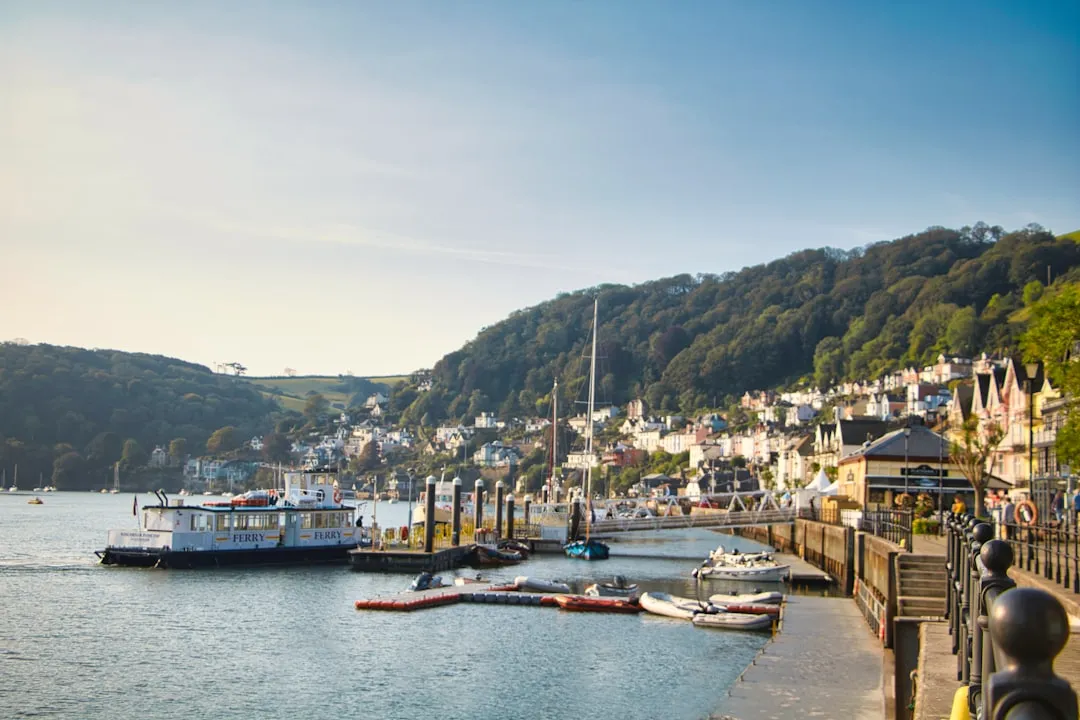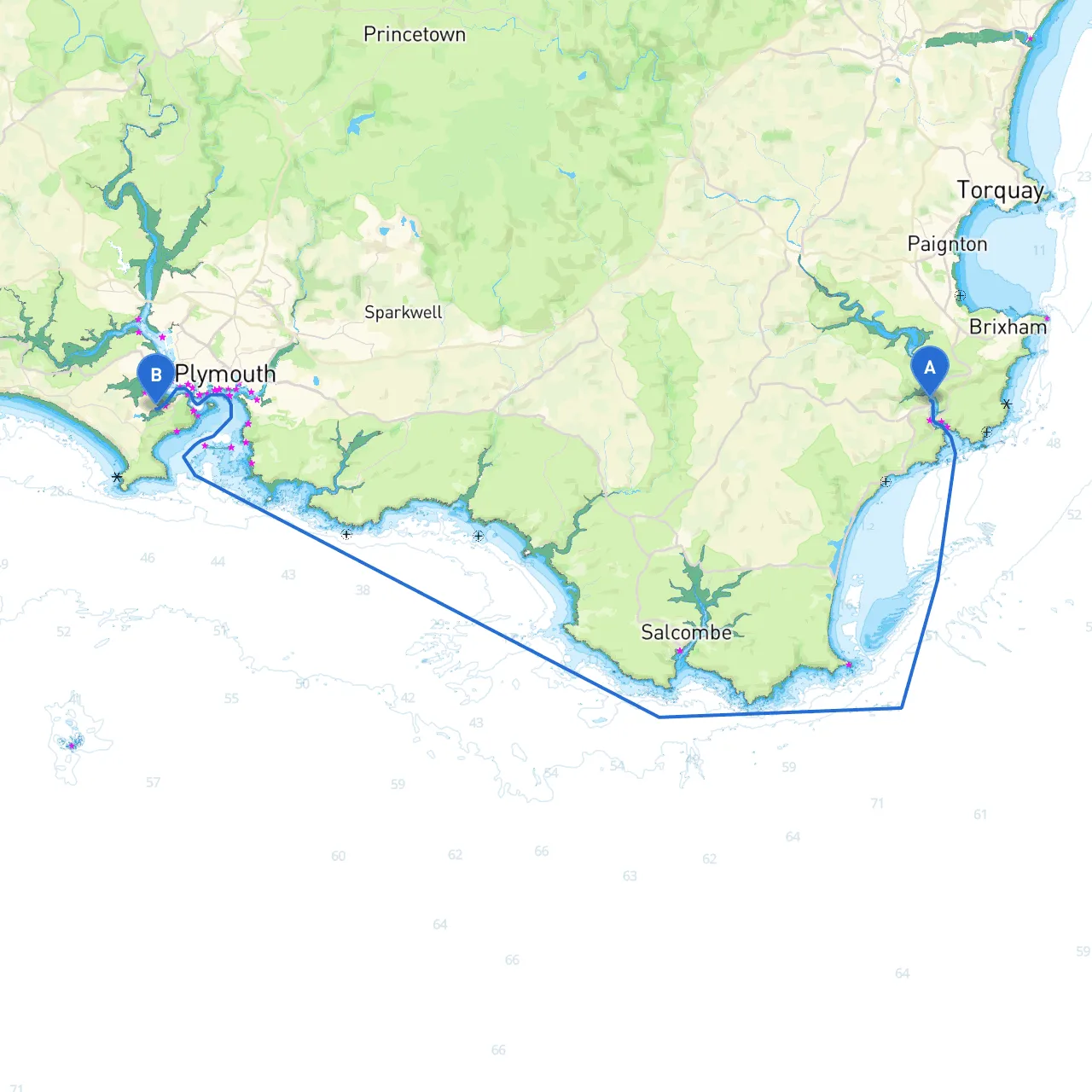

Pilotage Plan: Dartmouth, GB to Cornwall, GB
1. Departure from Dartmouth, GB Starting your journey in the picturesque town of Dartmouth, which is nestled along the banks of the River Dart, you'll find yourself in a vibrant sailing hub. Before setting off, make sure to familiarize yourself with the river currents and tides as they can significantly influence your departure. The river is also home to the Dartmouth Castle, a striking landmark guarding the harbor. It’s worth a quick stop to take in the views and the rich maritime history it represents.
2. Navigating the River Dart As you leave Dartmouth, you'll want to pay close attention to navigation markers along the River Dart. The swift currents can be deceptive, particularly around Greenway, the former home of Agatha Christie. Be mindful of recreational traffic and local fishing boats, especially near the various pontoons. Remember to respect local regulations regarding speed limits in the river and maintain a watchful eye for wildlife, particularly swans and other waterfowl.
3. Leaving the River and Entering the English Channel As you exit the estuary and make your way towards the wide expanse of the English Channel, be prepared for open water conditions. There's typically a strong tidal flow to consider here, so aligning your departure with the tide could offer a smoother ride. If conditions become rough, both the Torbay area to the east and Start Bay to the south offer good shelter. Start by heading southwest from the mouth of the Dart, keeping clear of any fishing vessels which congregate in the deeper waters.
4. Approaching Salcombe As you make your way along the coastline, a slight detour into Salcombe is worth considering. Salcombe is a quaint town known for its natural beauty and sheltered harbor. This is an excellent place for a respite if the weather takes a turn. You can take advantage of the numerous cafes, explore the local shops, or embark on a short hike to marvel at the stunning coastal views. The harbor entry is straightforward but keep a lookout for small boats and unmarked moorings.
5. Continuing Along the Coast After your break in Salcombe, continue westward along the coastline towards Prawle Point. This area can be notoriously challenging due to strong tides and currents, particularly around the headlands. Utilize your navigation aids diligently here; chart your course with devices like a GPS, and monitor your buoyage system. Prawle Point also indicates the start of a more rugged coastline, and it can be quite beautiful – just keep a respectful distance from the cliffs.
6. Notable Landmarks and Approaching Cornwall Continuing your journey, keep an eye out for the striking cliffs of Bigbury Bay, as well as Burgh Island, known for its iconic Art Deco hotel. This is another great point to pause if you wish to explore the natural beauty surrounding you.
As you approach the borders of Cornwall, your final destination becomes clearer with views of the Eden Project and the iconic Cornish coastline. Depending on the specifics of your route, you may also choose to stop at Fowey, another popular harbor town known for its artistic culture and inviting beaches.
7. Arrival in Cornwall, GB As you finally dock in Cornwall, ensure that you comply with local mooring regulations and report your arrival at the tourist information center or harbor master, if required. This area is quite popular with boaters, so be prepared for a lively scene! There are opportunities for fun activities like surfing, hiking in the nearby coastal pathways, or simply enjoying a local pasty.
Safety Considerations & Recommendations Throughout your entire journey, monitor the weather closely, as conditions can change rapidly while at sea. Carry a marine VHF radio for communication and emergency response. The renewable natural beauty of this route is enchanting, but always prioritize safety, ensuring life jackets are worn and a proper safety briefing has been conducted.
In conclusion, this route from Dartmouth to Cornwall is not only a beautiful adventure through the waters of South Devon and into the heart of Cornwall but is well suited for experienced boaters looking for a mix of exploration and tranquility. Additionally, consider using boating navigation apps, including Savvy Navvy, Navionics, and iNavX to enhance your sailing experience, ensuring you stay updated with live weather feeds, tidal calendars, and navigational charts.
Bon voyage, and may your sea adventures be safe and memorable!